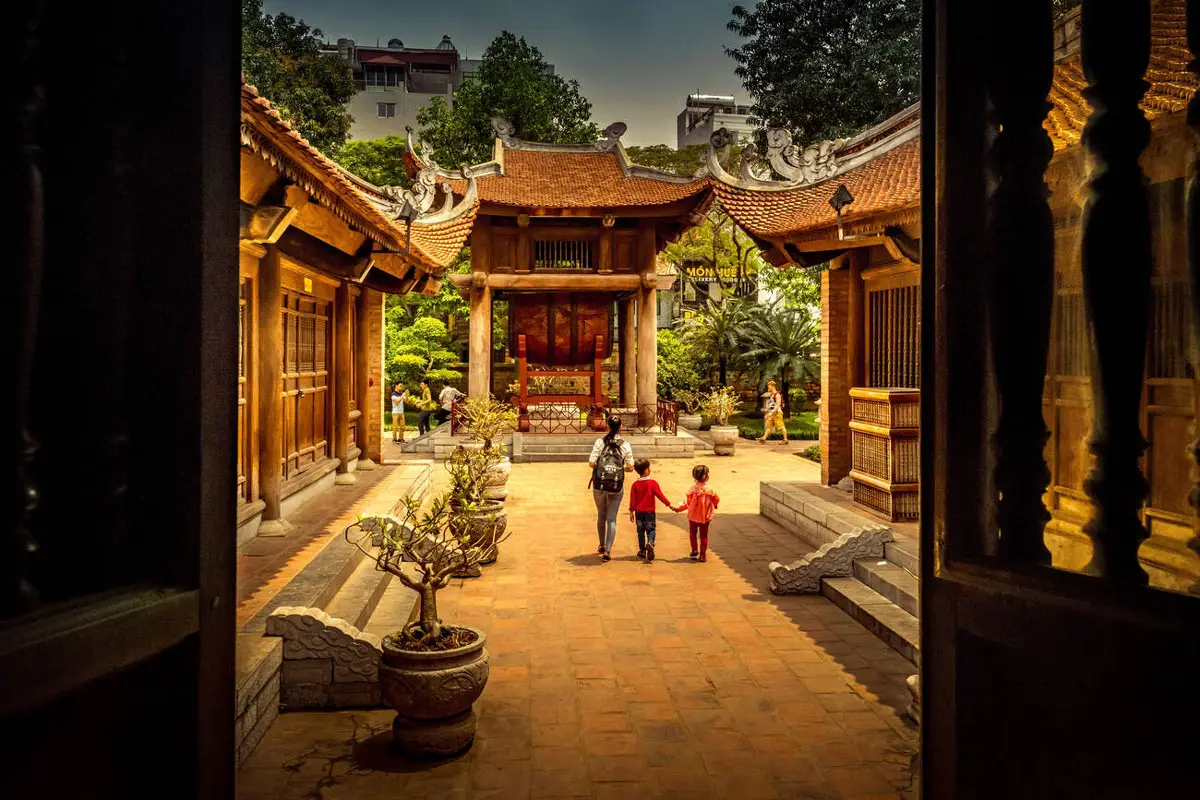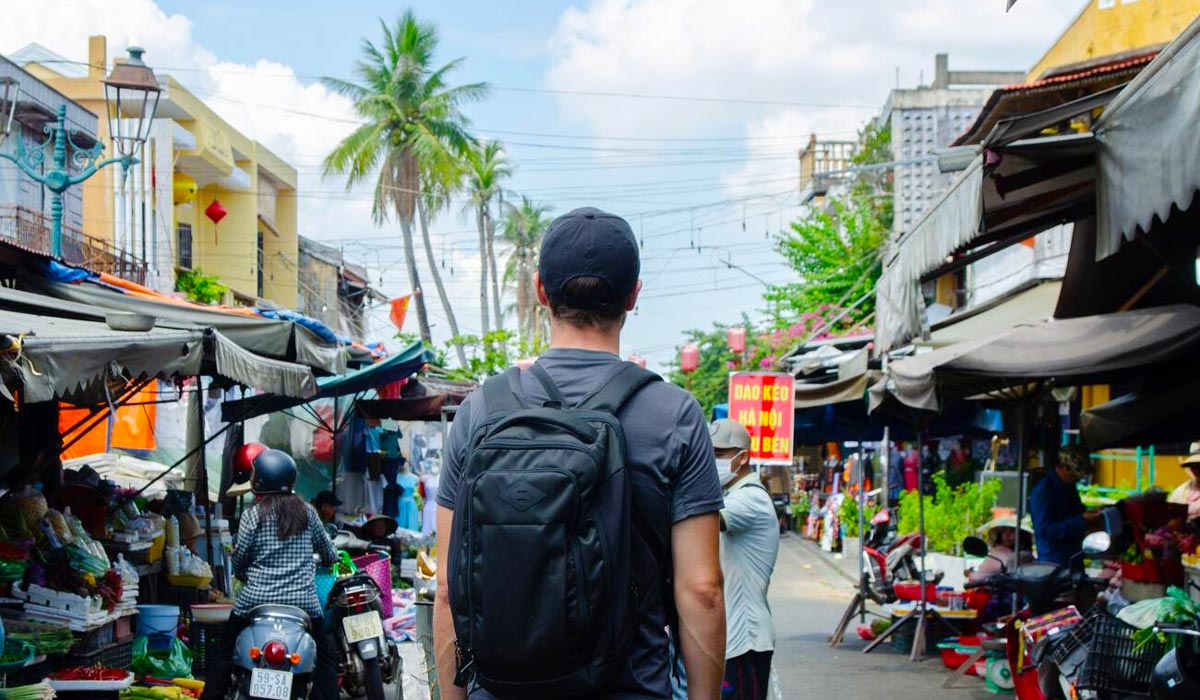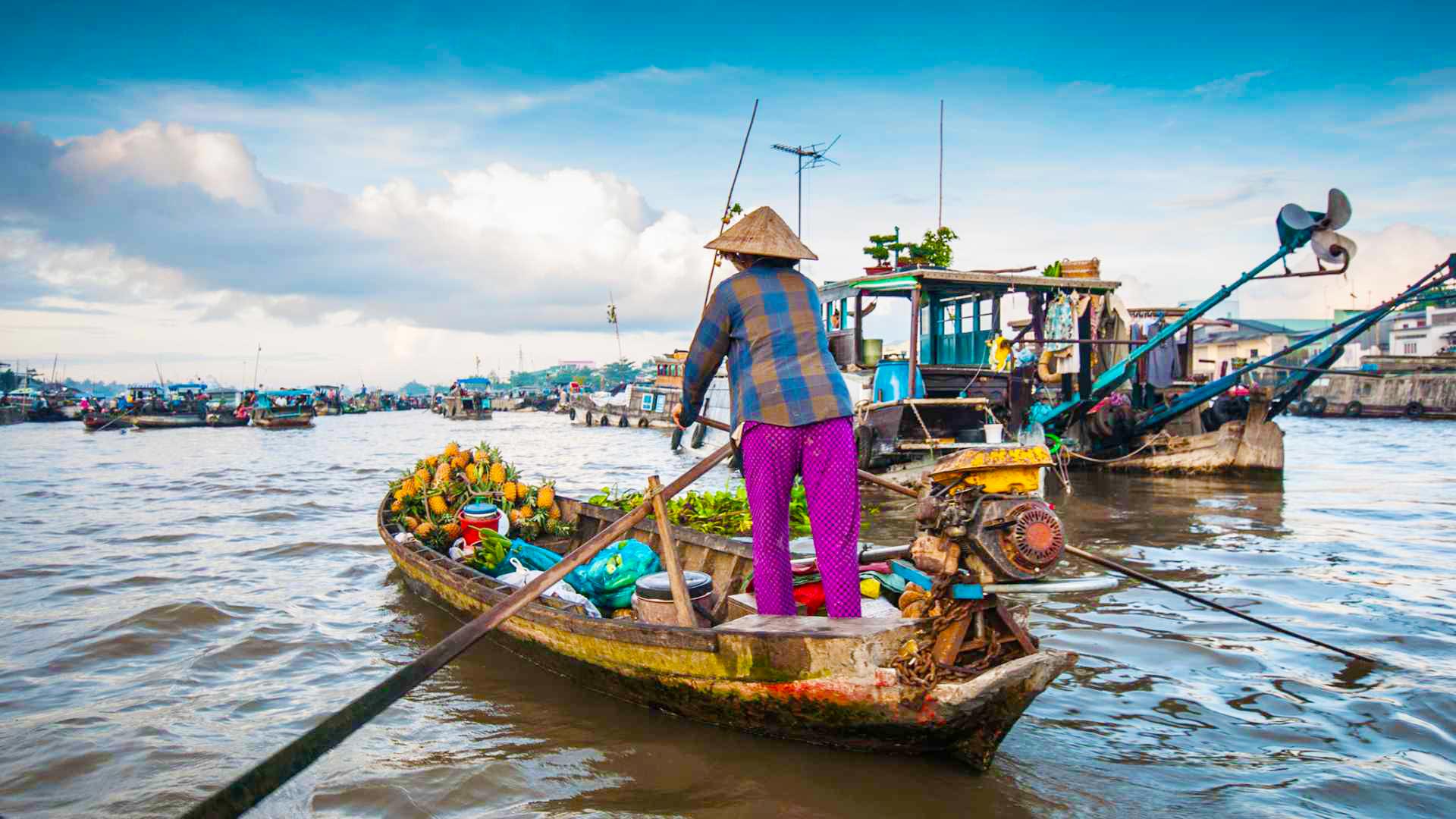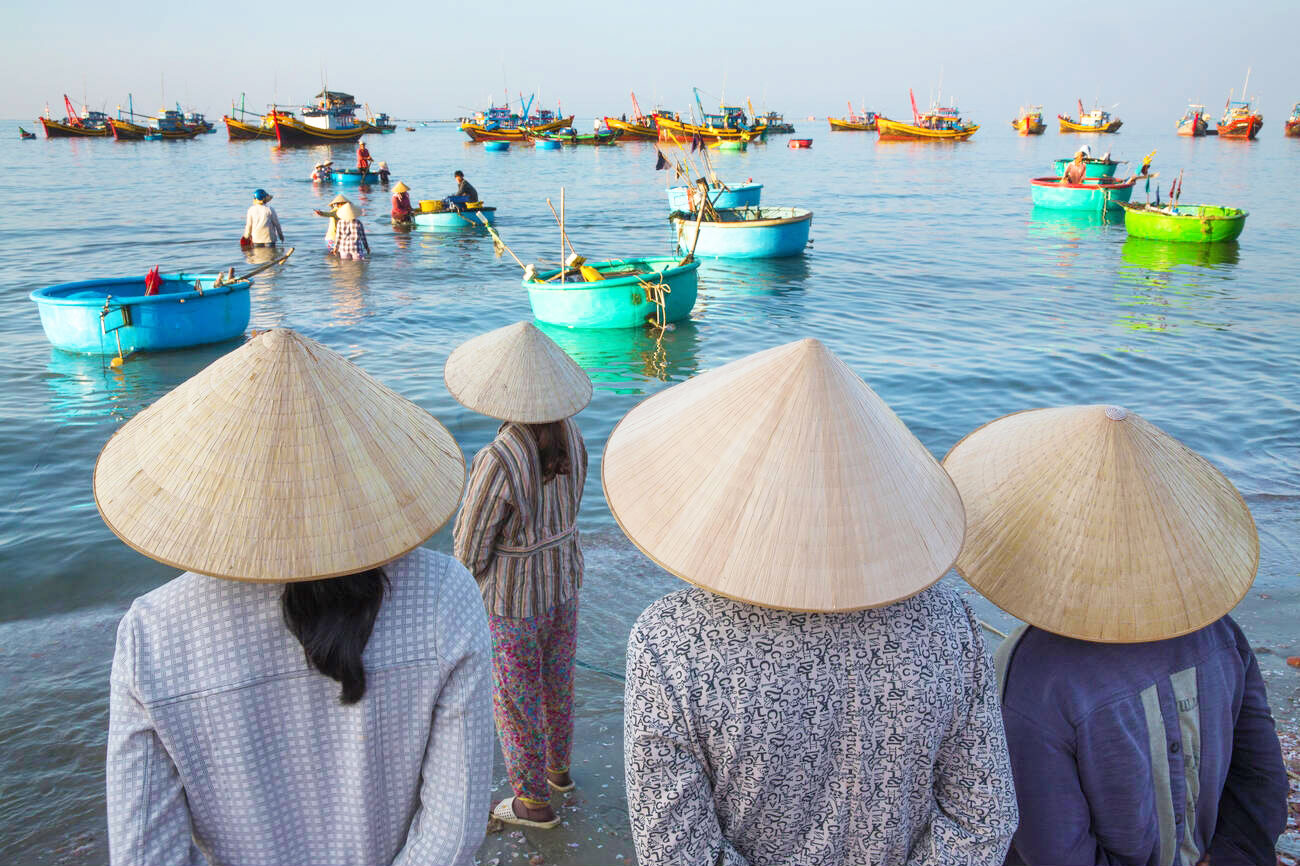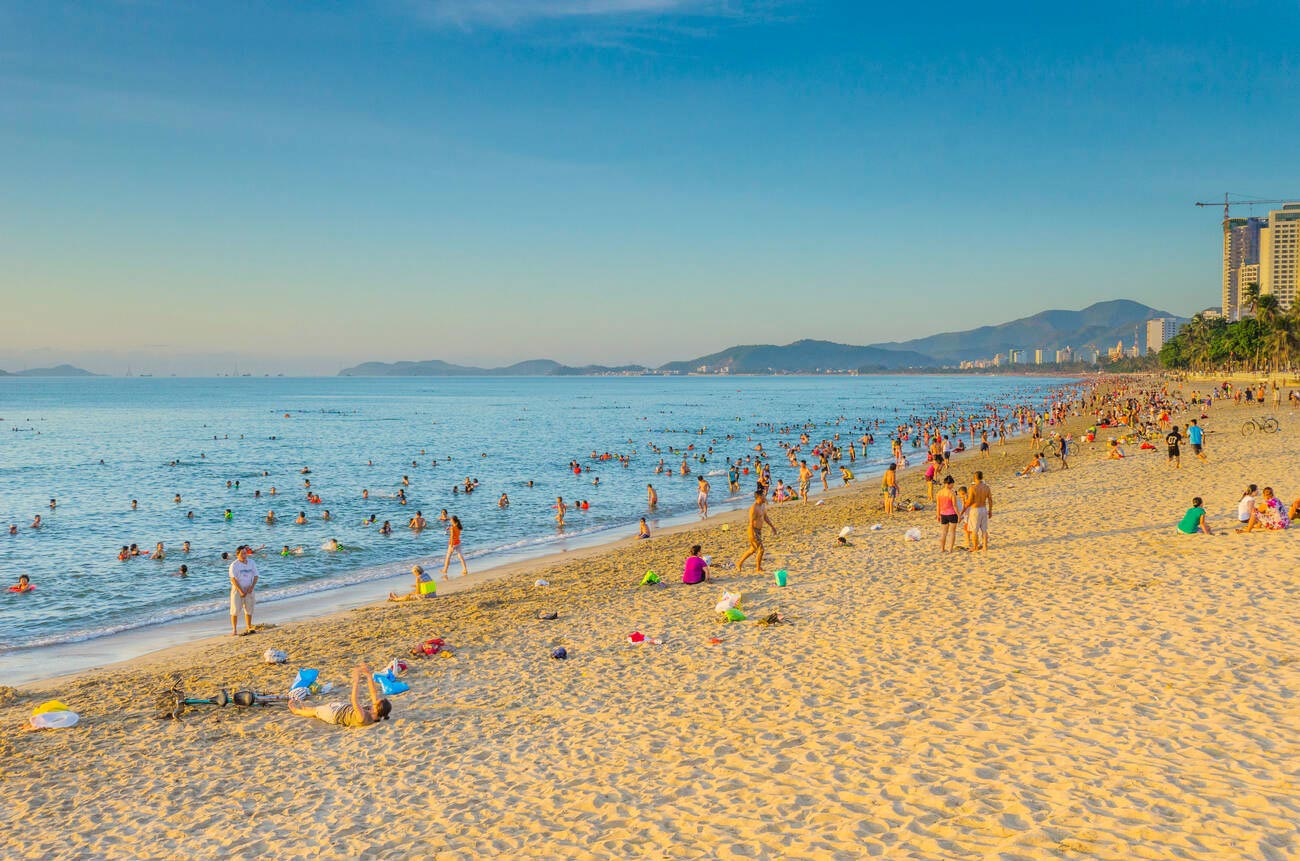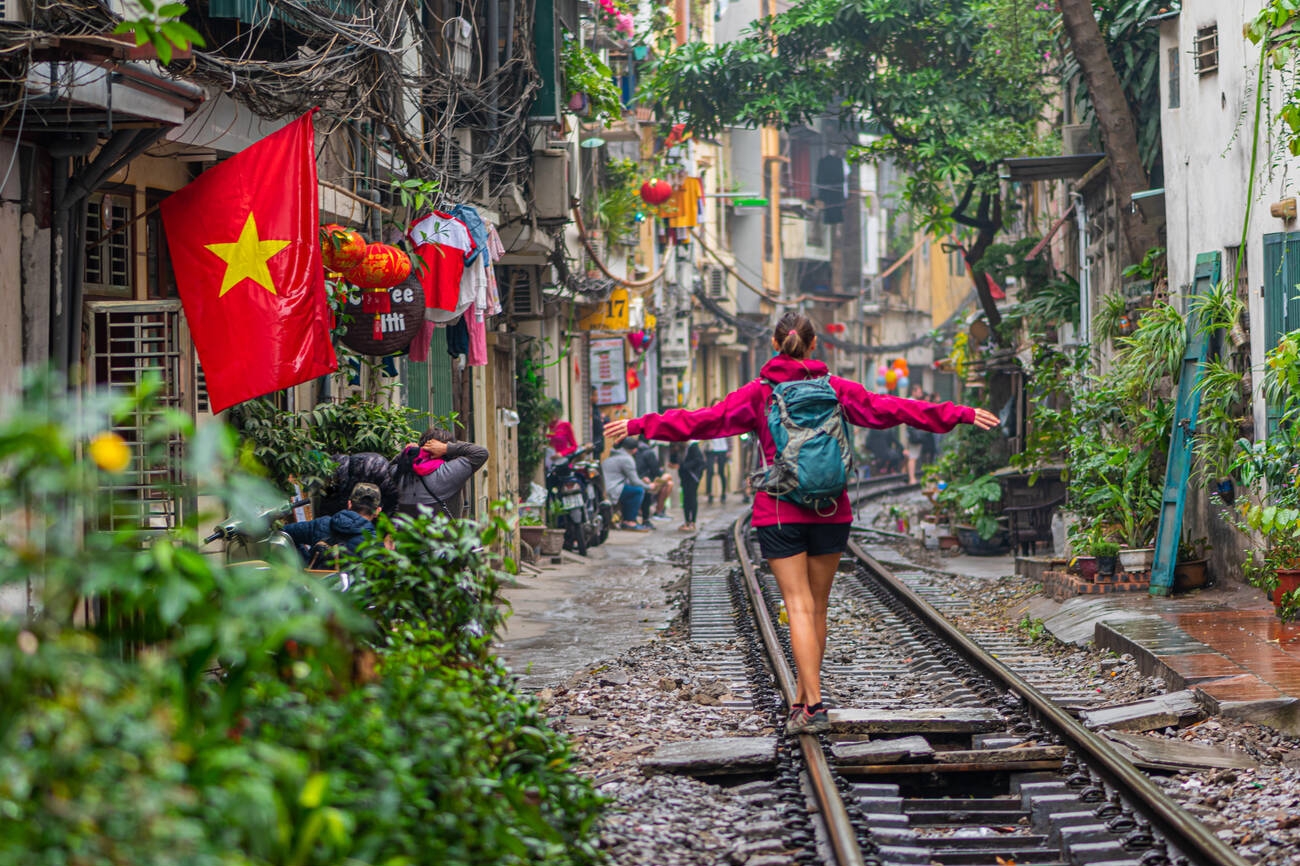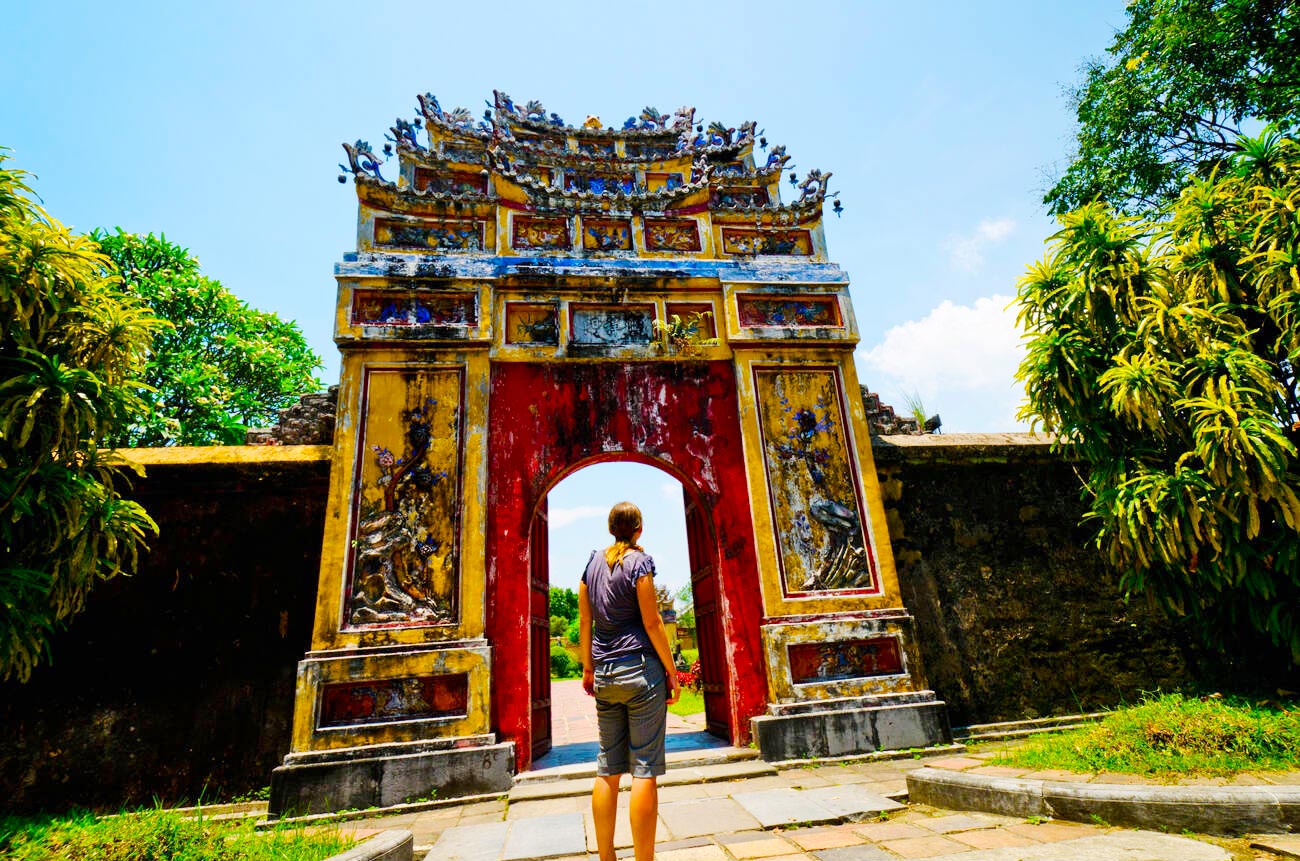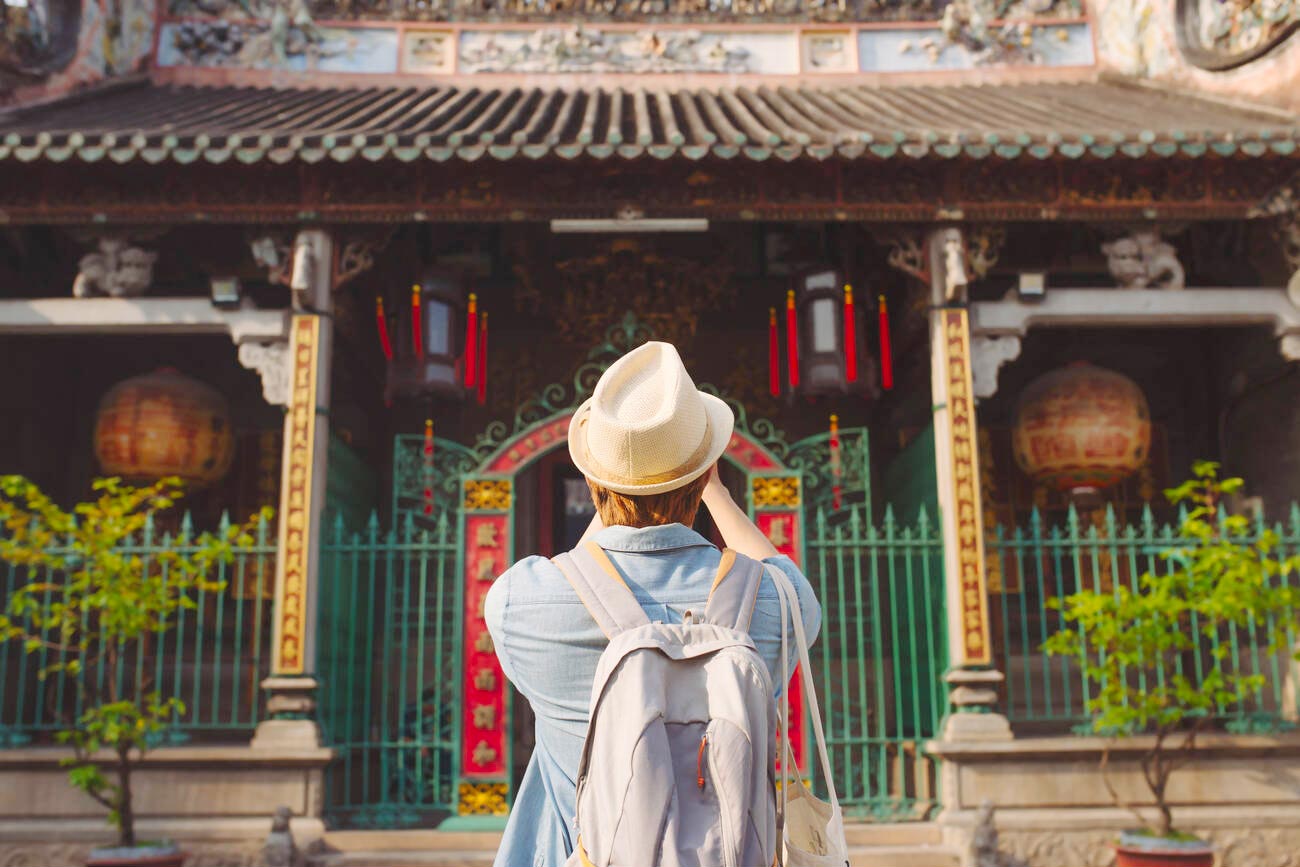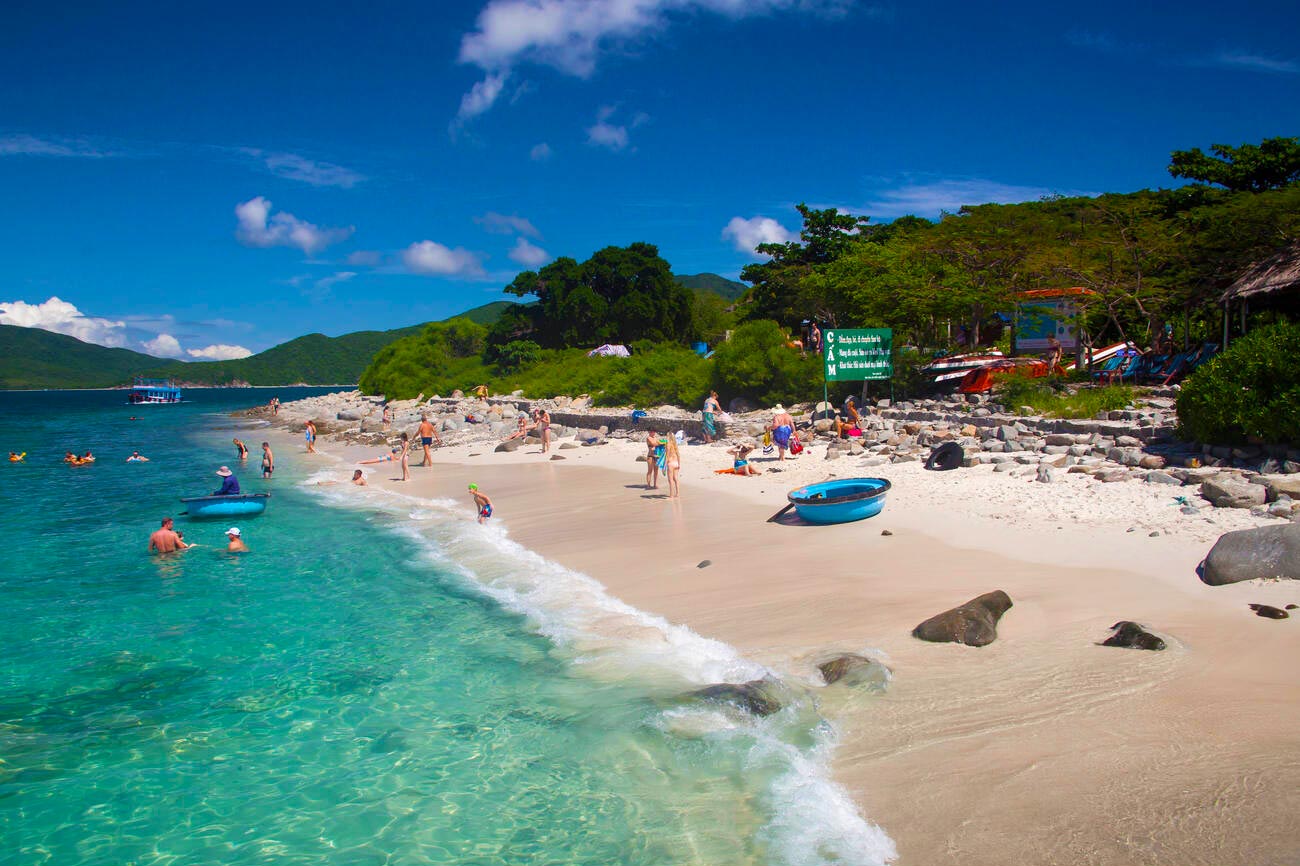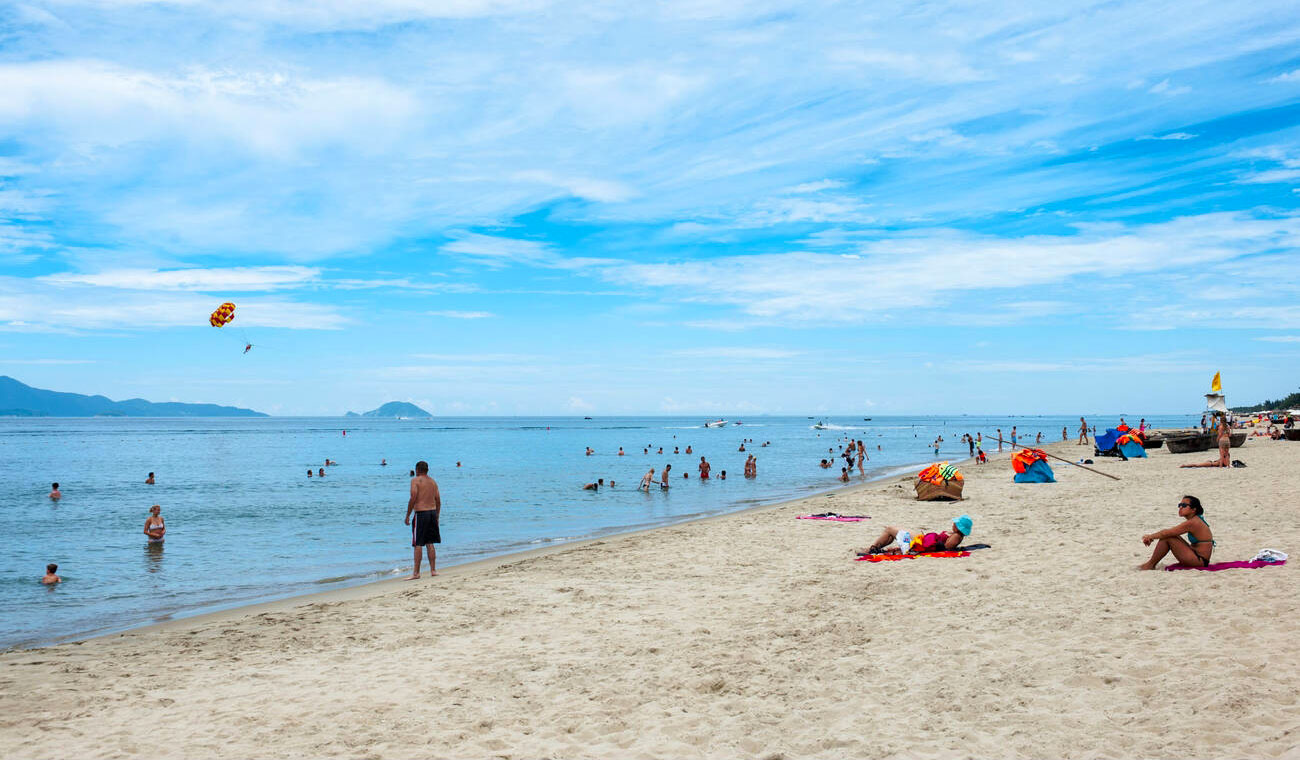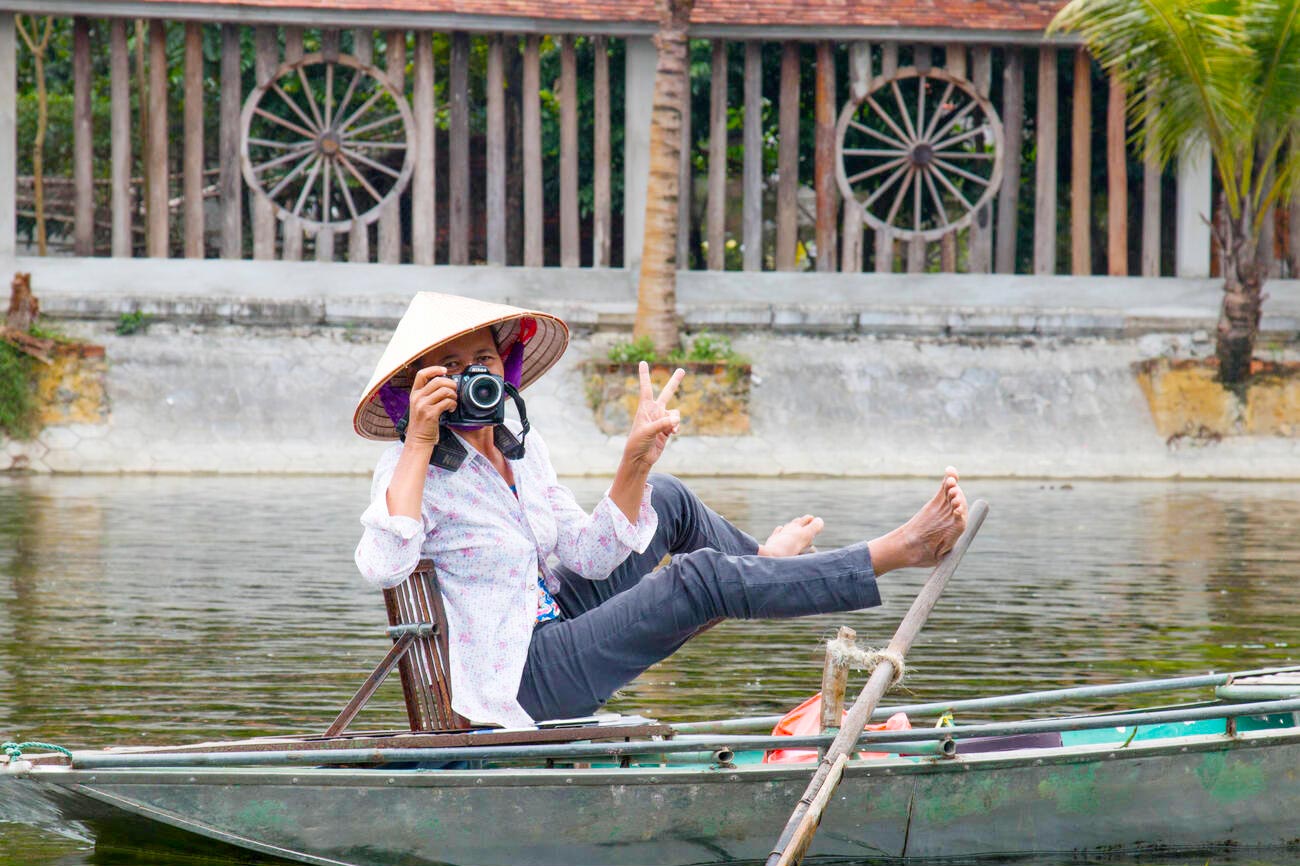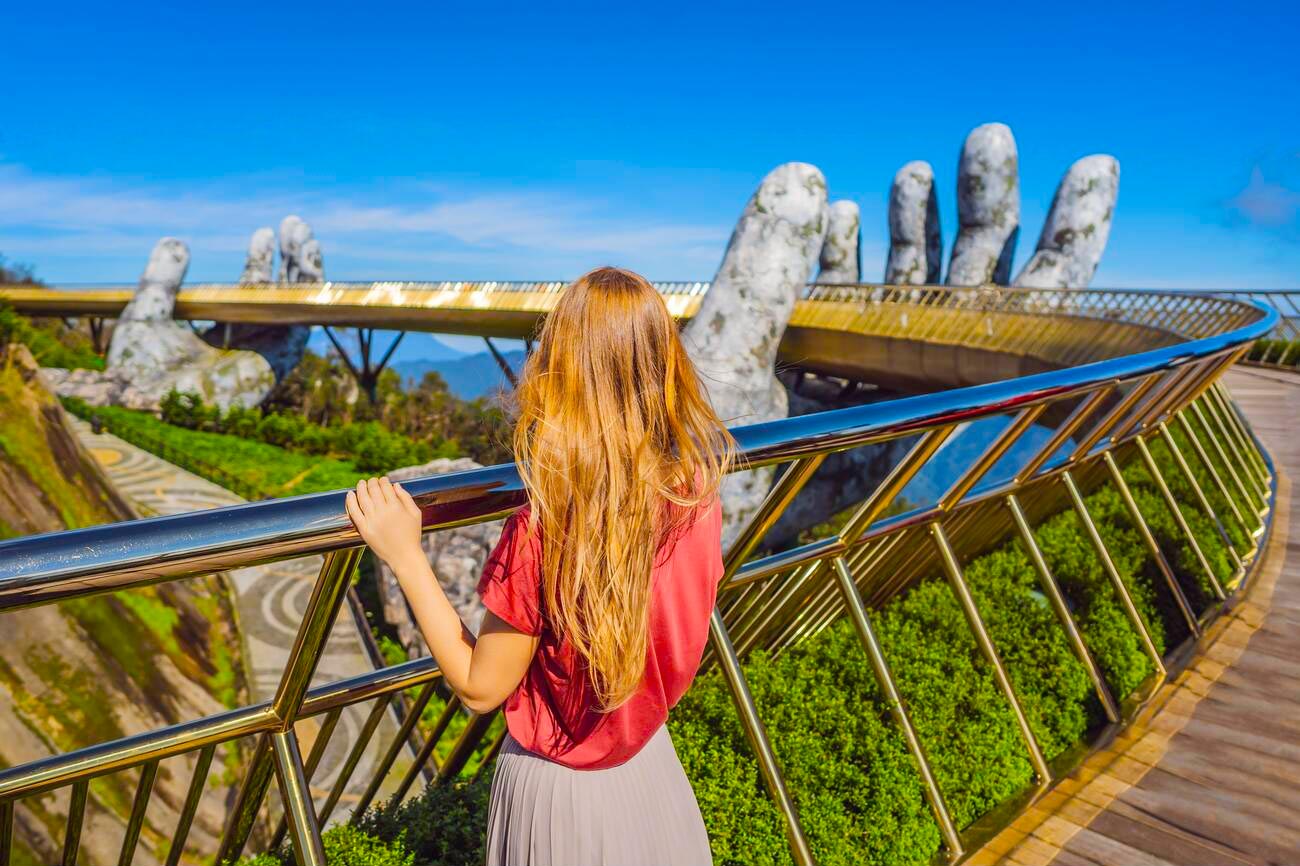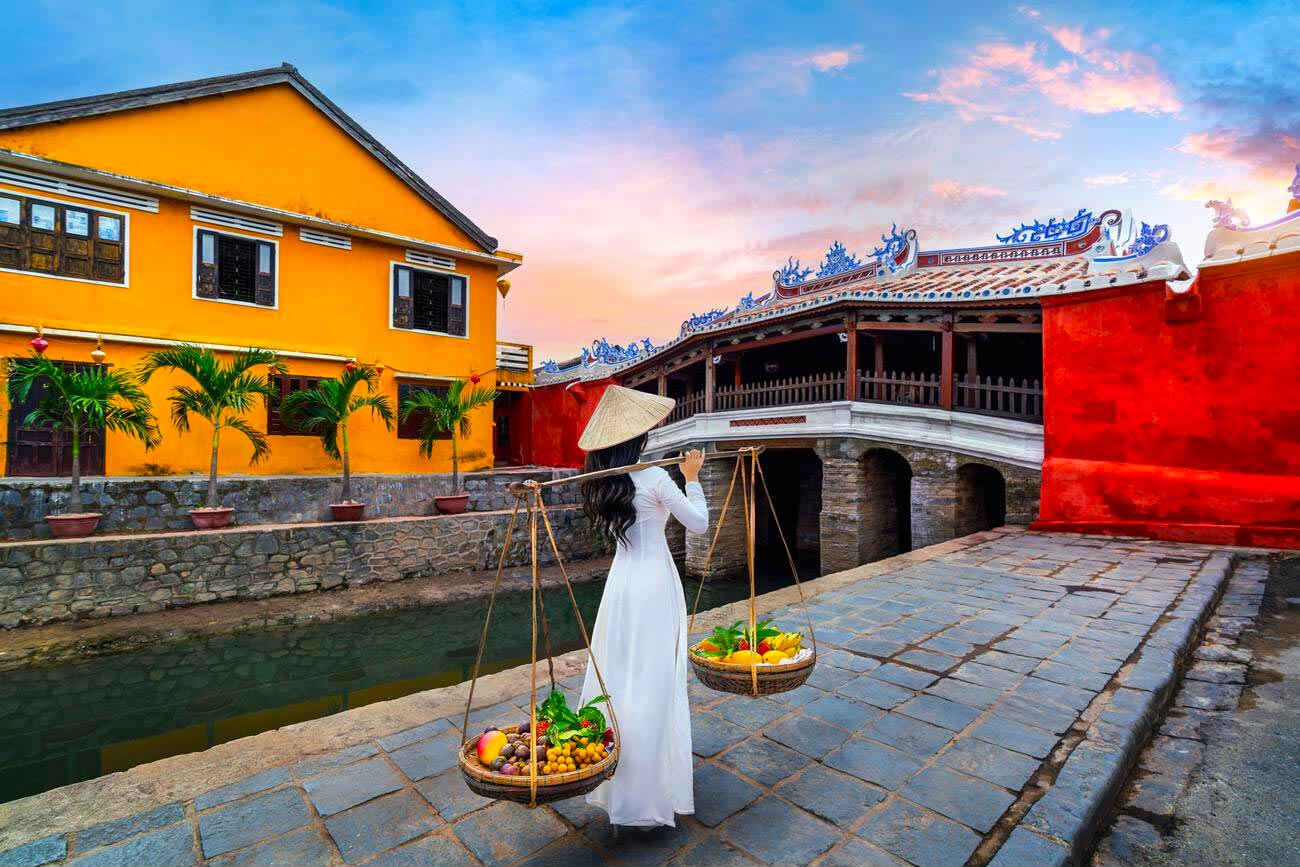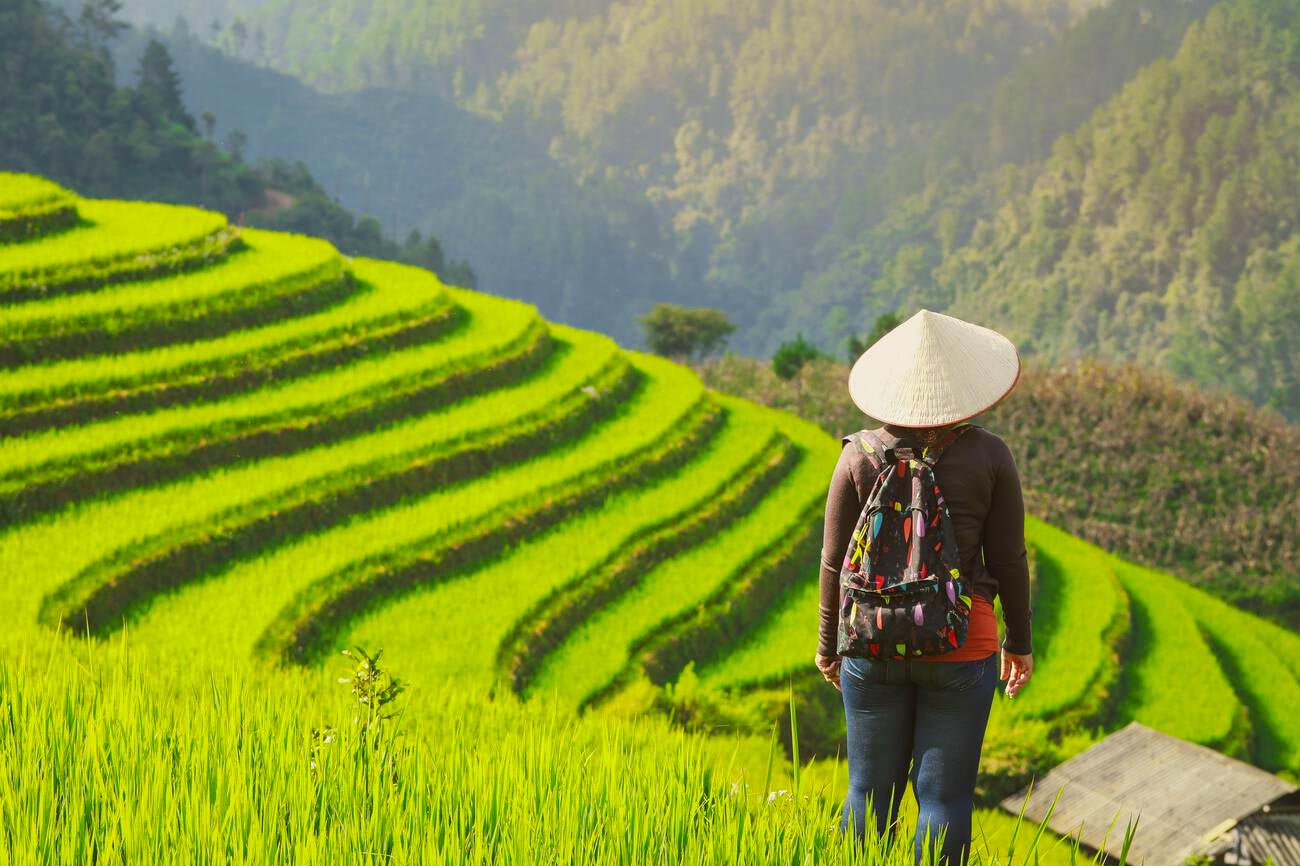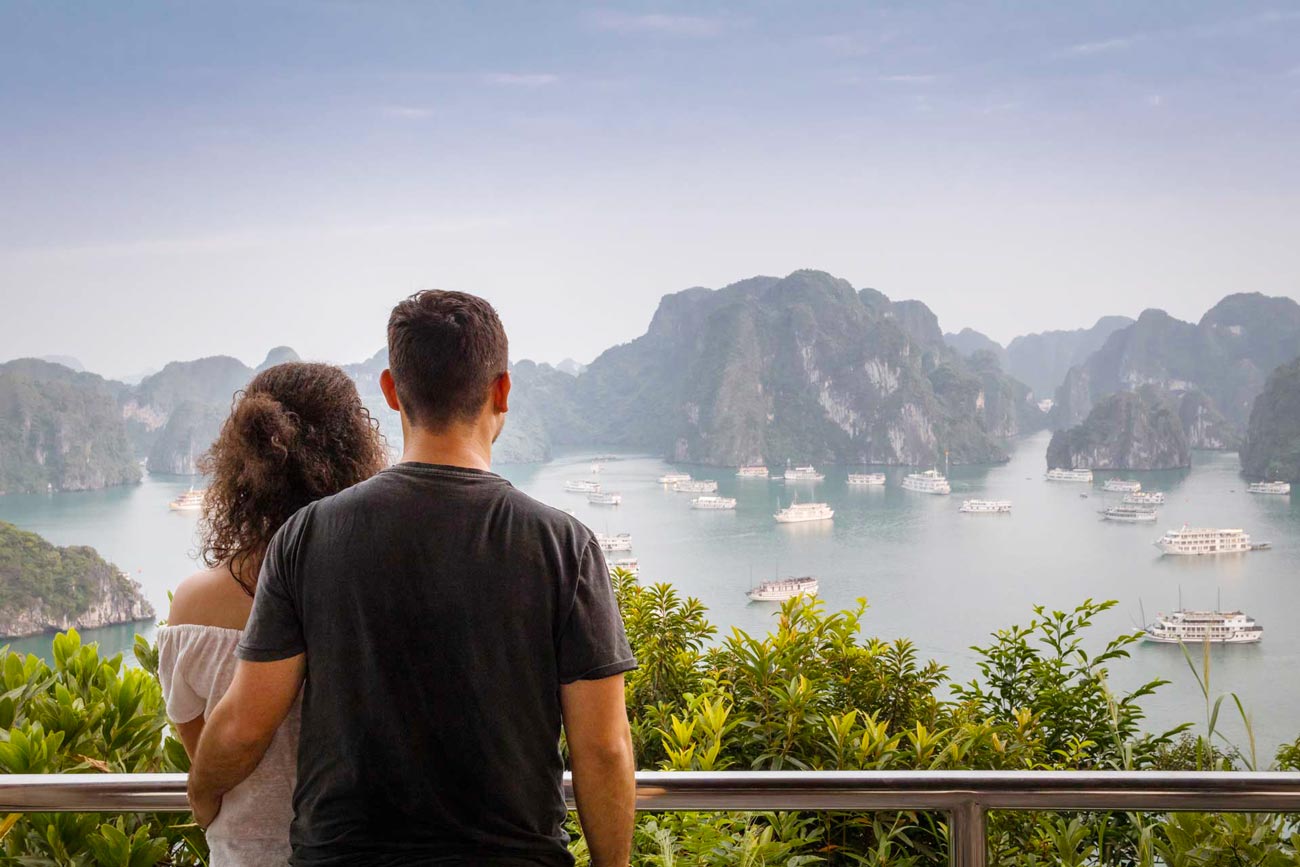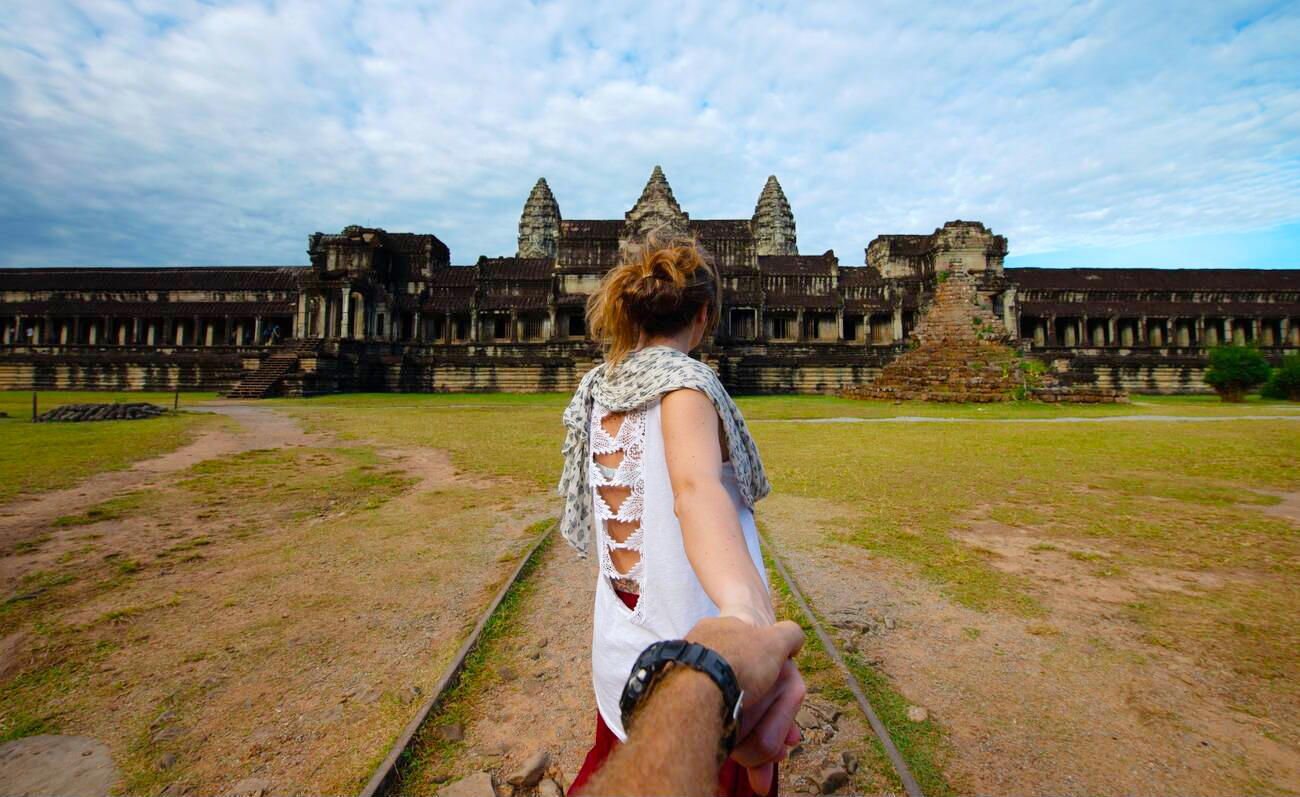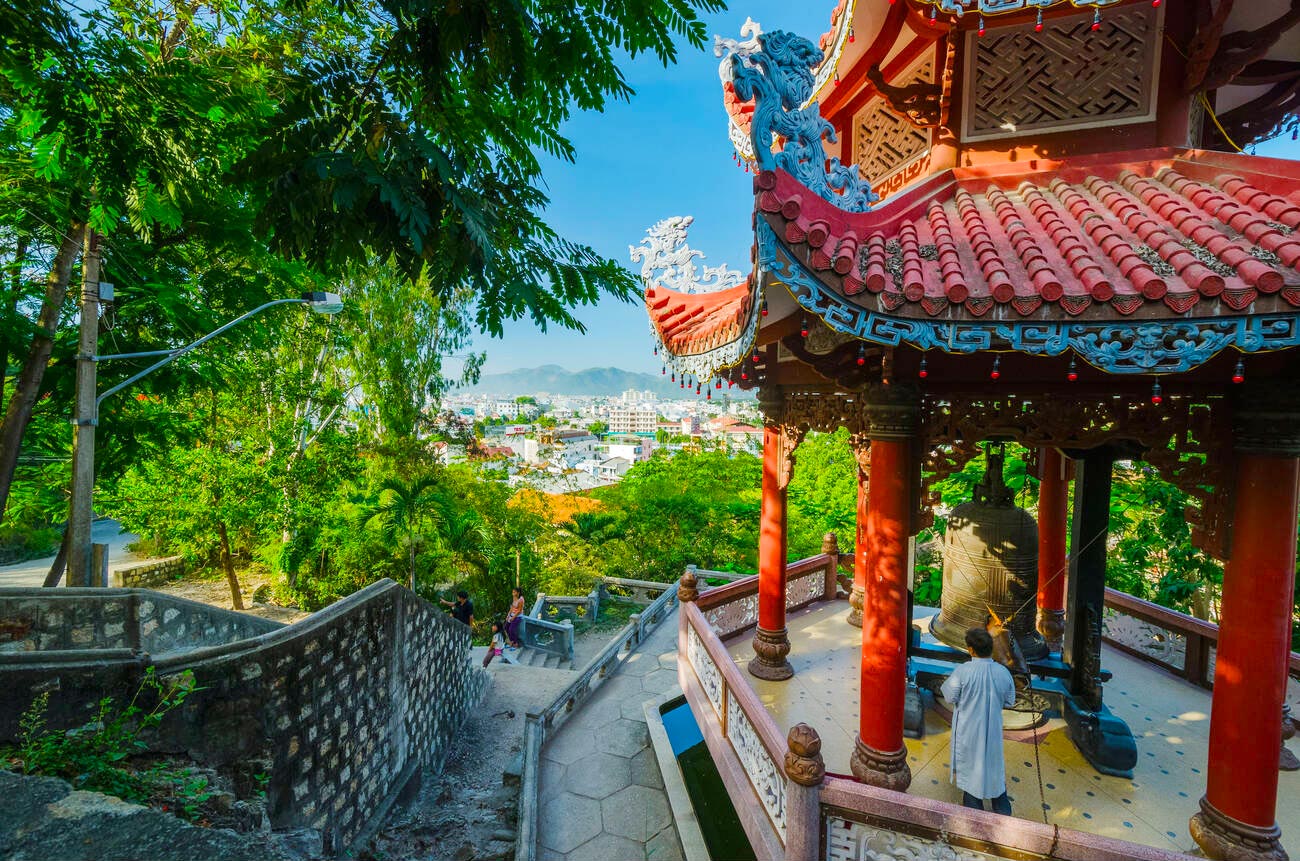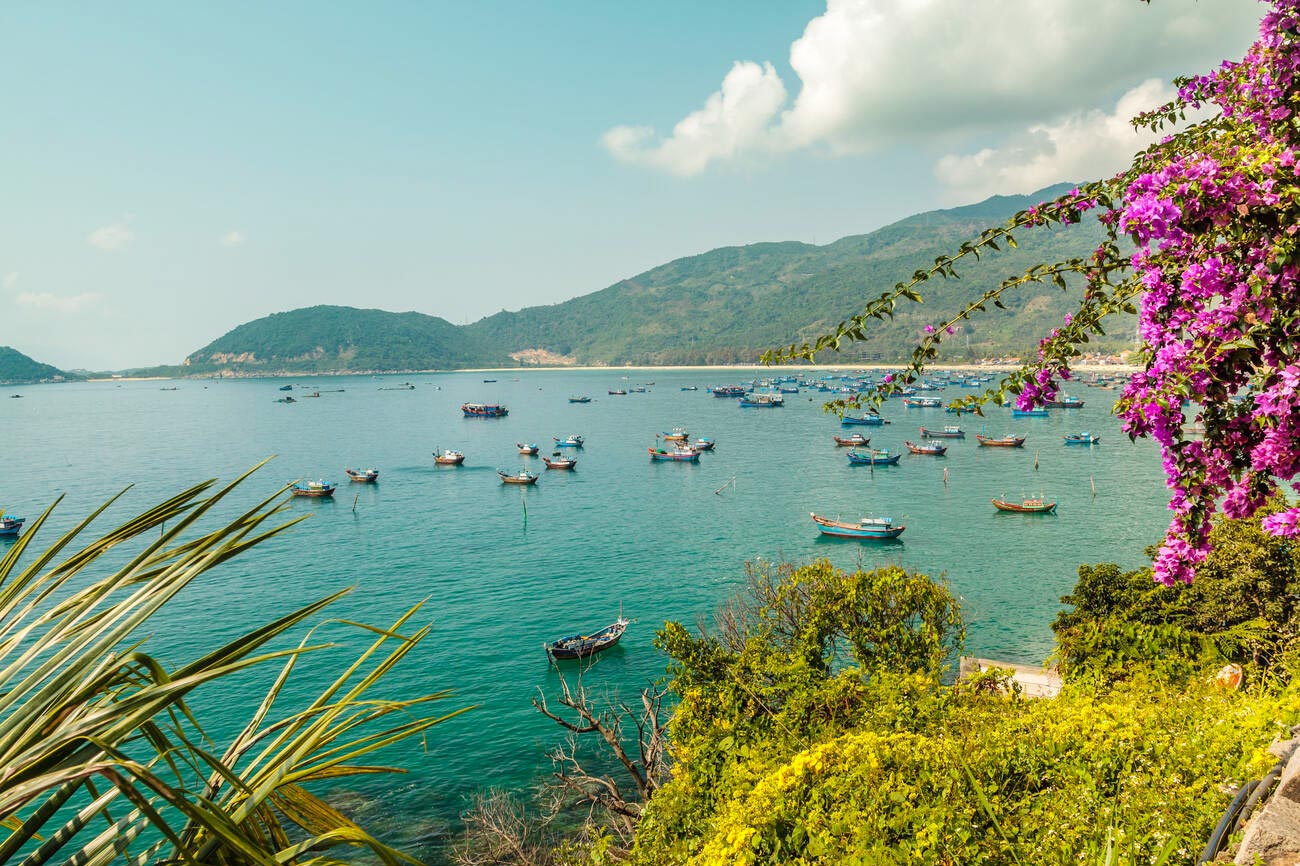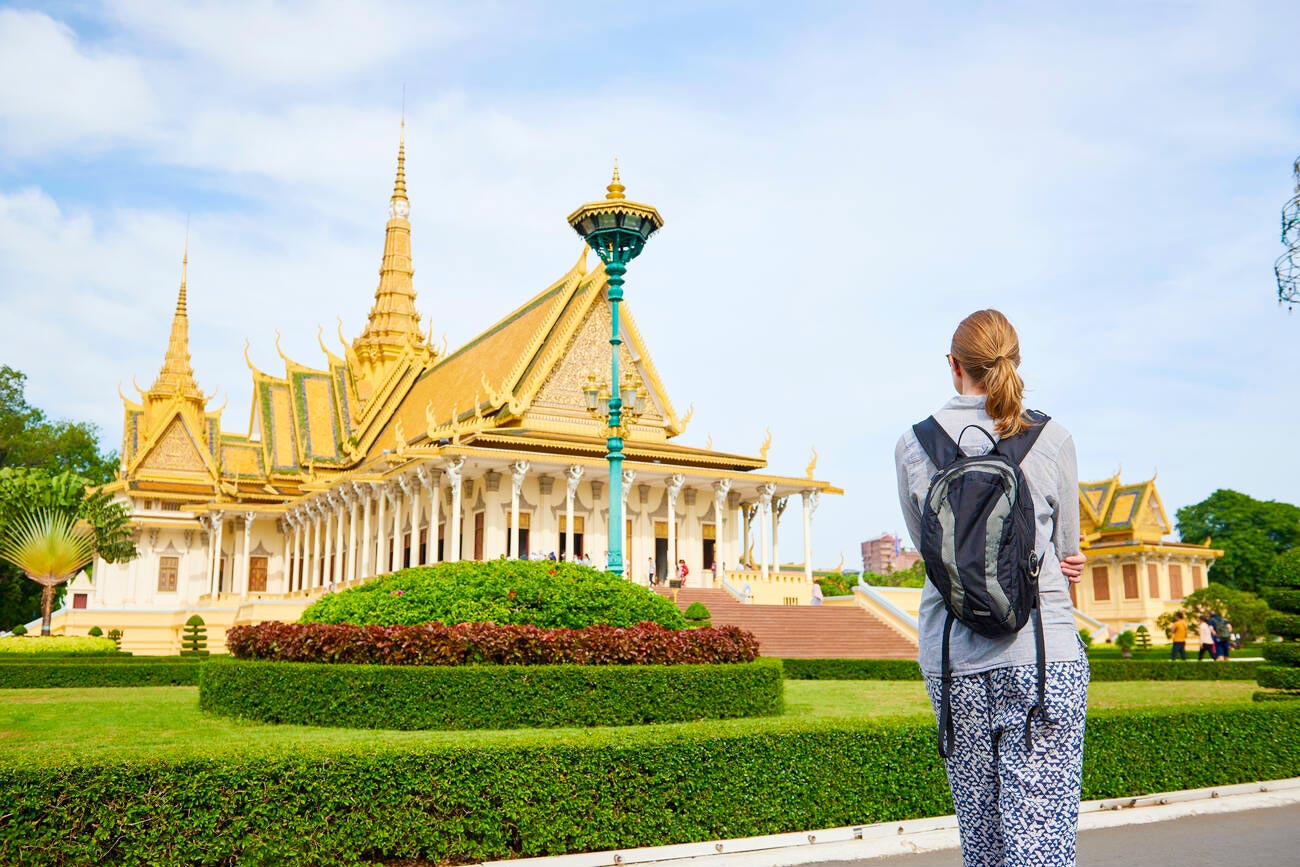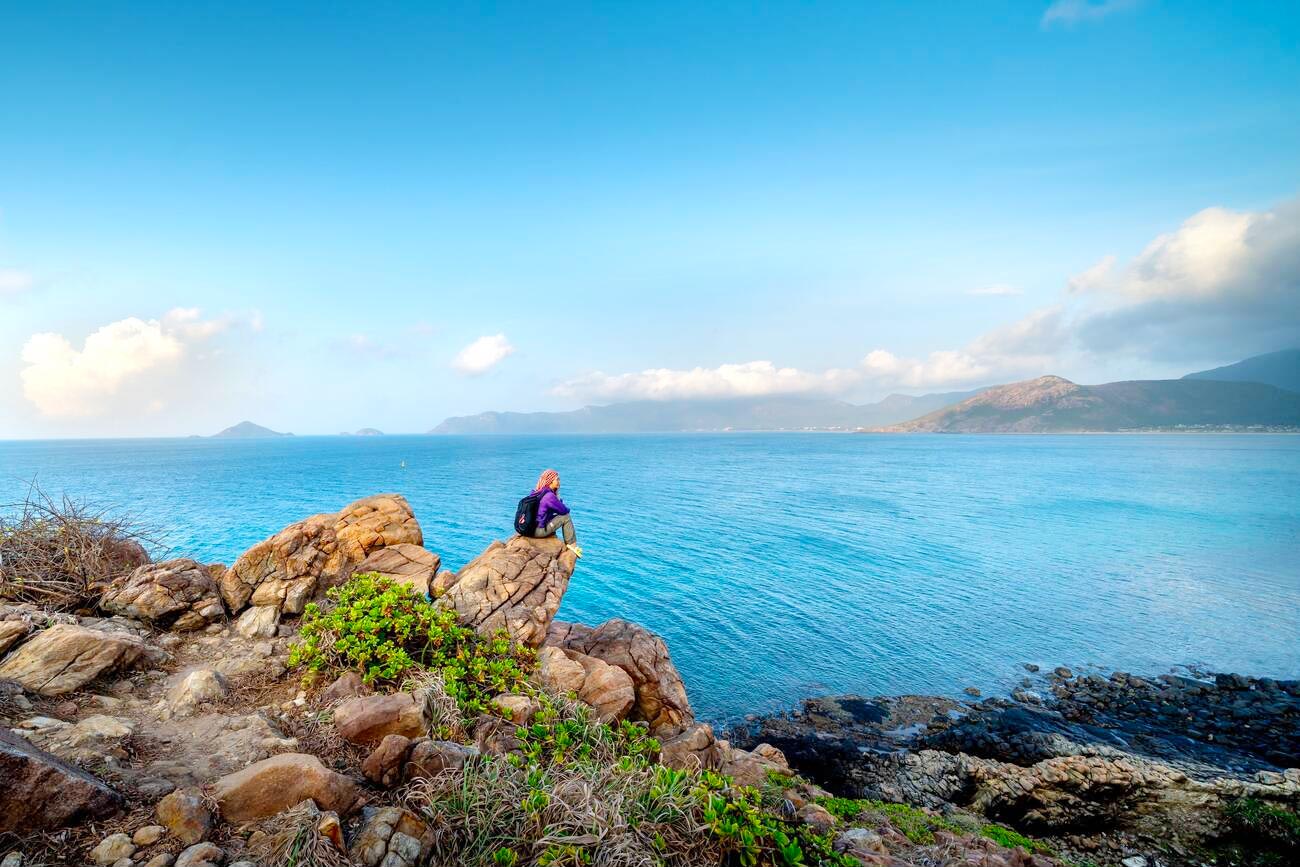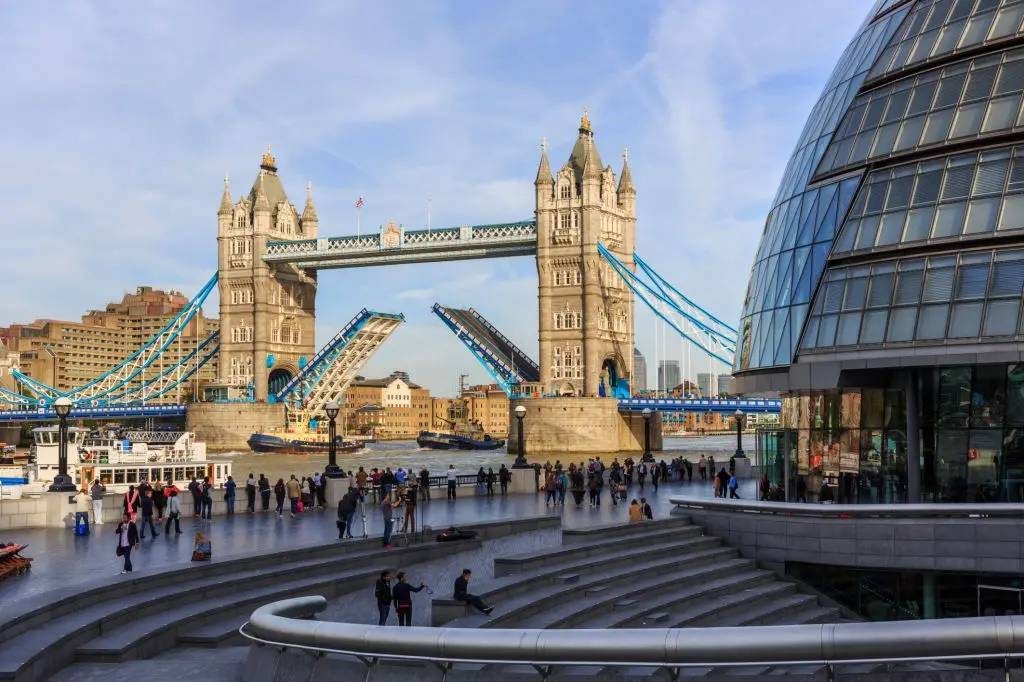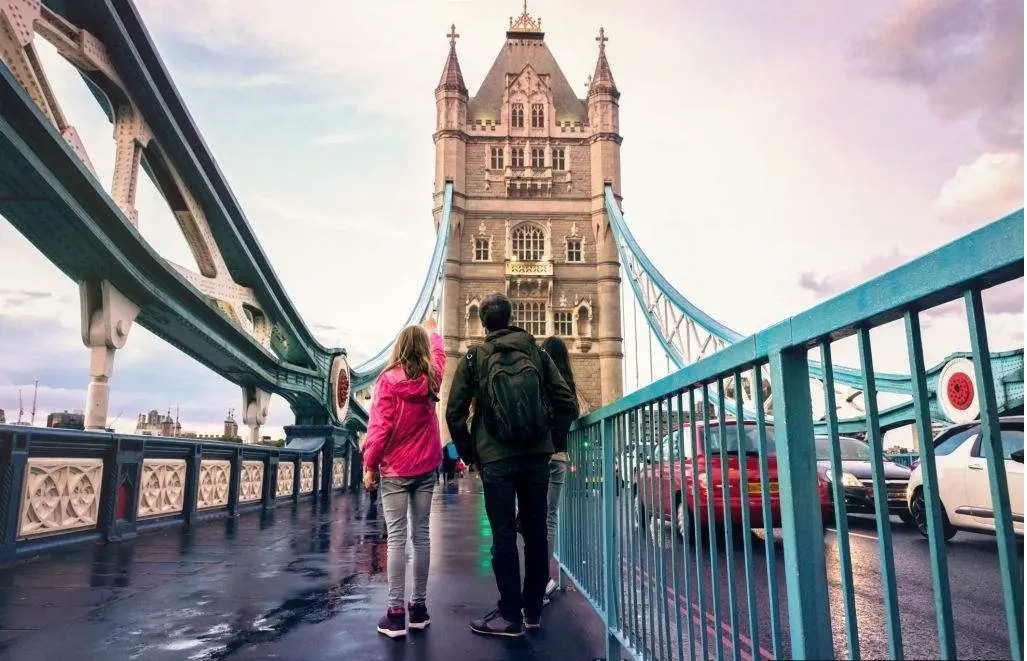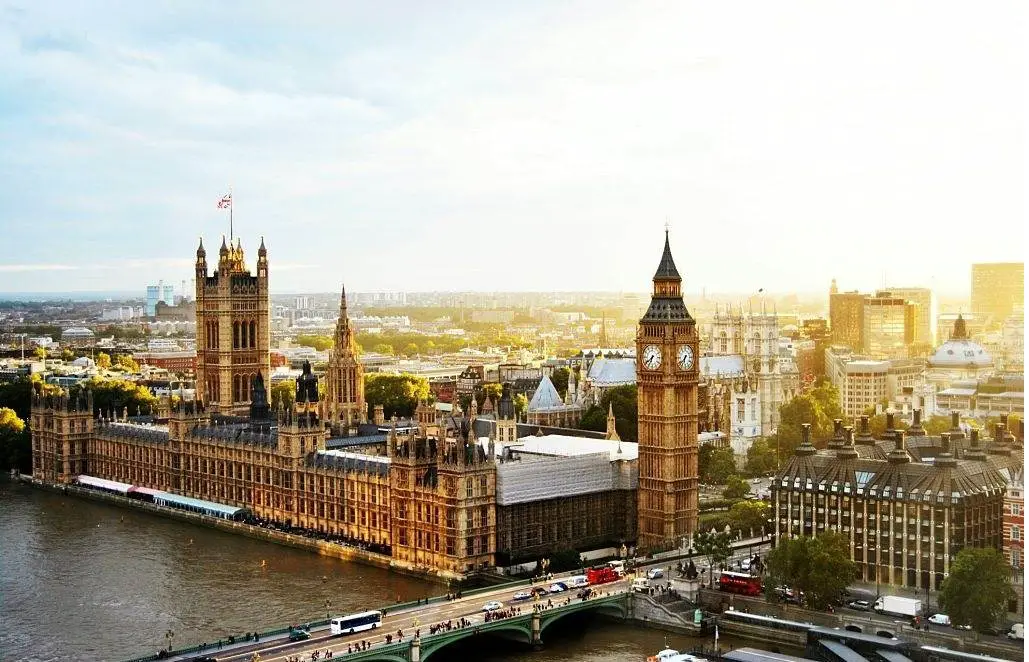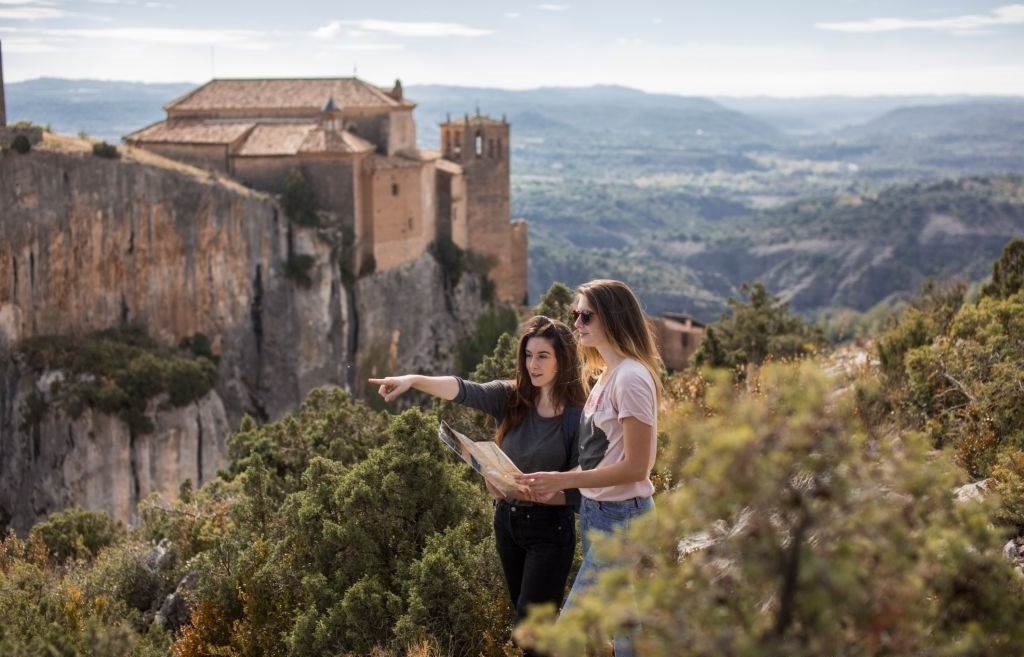Summary
- The Temple of Literature, built in 1070, honors Confucius and was Vietnam's first university, showcasing the nation's respect for education.
- Visitors can explore five courtyards with traditional architecture, each offering cultural, scholarly, and spiritual significance, including iconic structures like the Pavilion of Constellation of Literature.
- The temple is centrally located in Hanoi, easily accessible by taxi, motorbike, foot, or cyclo, with nearby attractions like Hoan Kiem Lake and the Hoa Lo Prison Museum.
- Ideal visiting months are October to April, when the temple offers a serene, educational experience in a peaceful, historically significant environment.
The Temple of Literature, nestled in the heart of Hanoi, offers a glimpse into Vietnam’s cultural and intellectual legacy. Surrounded by lush greenery and traditional architecture, this serene sanctuary invites visitors to step back in time and experience the elegance of a bygone era. The Temple of Literature is where the past and present harmoniously converge, leaving a lasting impression on all who visit.
This article will serve as a comprehensive travel guide to the Temple of Literature. It will provide insights into its historical significance, architectural highlights, and cultural importance, along with practical tips to help you plan an enriching visit to this iconic landmark in Hanoi.
The Temple of Literature Historical Background
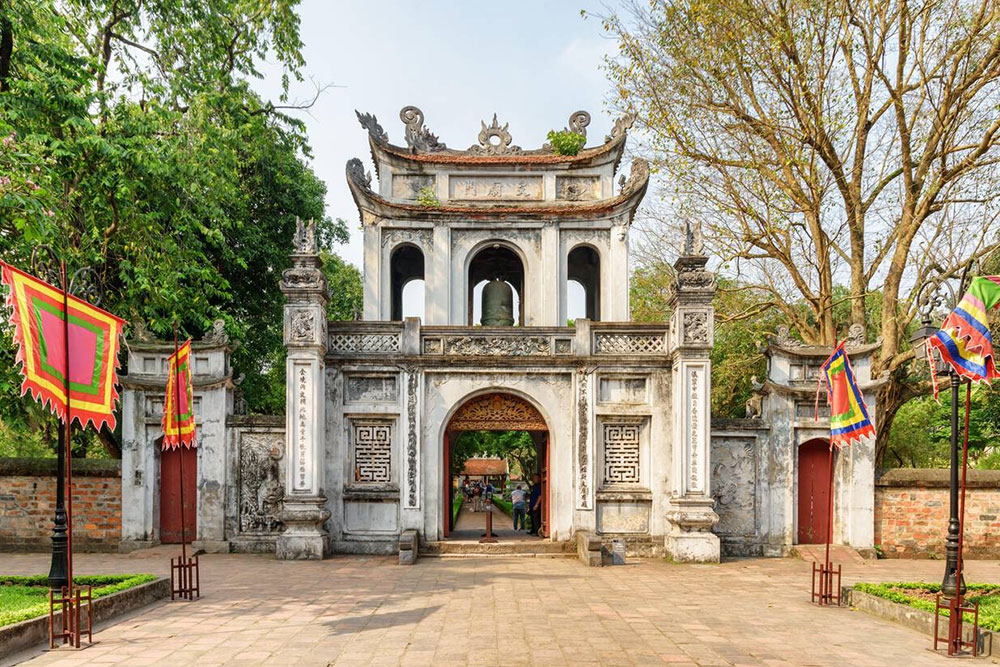
The Temple of Literature, known as Văn Miếu in Vietnamese, was established in 1070 during the reign of Emperor Ly Thanh Tong. Originally built to honor Confucius and promote Confucian ideals, the temple quickly became a center for education and intellectual advancement in Vietnam. In 1076, it was transformed into the Imperial Academy (Quốc Tử Giám), the first university in Vietnam, dedicated to training the nation’s elite scholars and future leaders.
For centuries, the temple hosted rigorous Confucian examinations. Successful candidates' names were engraved on stone stelae, now preserved within the temple grounds. These stelae rest atop stone turtles, symbols of wisdom and longevity.
The Temple of Literature has withstood the test of time, surviving wars and natural disasters, and remains a testament to Vietnam’s enduring respect for education, culture, and tradition.
How to Get the Temple of Literature?
The Temple of Literature is centrally located in Hanoi, making reaching from various parts of the city easy. Whether you are staying in the Old Quarter or elsewhere, the temple is just a short distance away, and several transportation options are available.
- By Taxi or Ride-Hailing: The quickest and most convenient option is to take a taxi or use a ride-hailing app like Grab. Input the destination and enjoy a direct ride to the temple. This is especially useful if you're traveling with a group or prefer comfort. The ride typically takes 10–20 minutes, depending on traffic.
- By Motorbike: For a more local experience, consider renting a motorbike. It allows you to navigate Hanoi’s streets at your own pace and can be a fun and affordable option for solo travelers or small groups. Be sure to wear a helmet and follow local traffic rules.
- On Foot: If you're staying nearby, the temple is within walking distance from many popular attractions. Walking immerses yourself in the local scenery and explores Hanoi’s vibrant streets.
- By Cyclo (Pedicab): Hire a cyclo for a more leisurely and traditional experience. It’s a unique way to enjoy the surroundings while being chauffeured to the temple.
What to See and Do at the Temple of Literature?
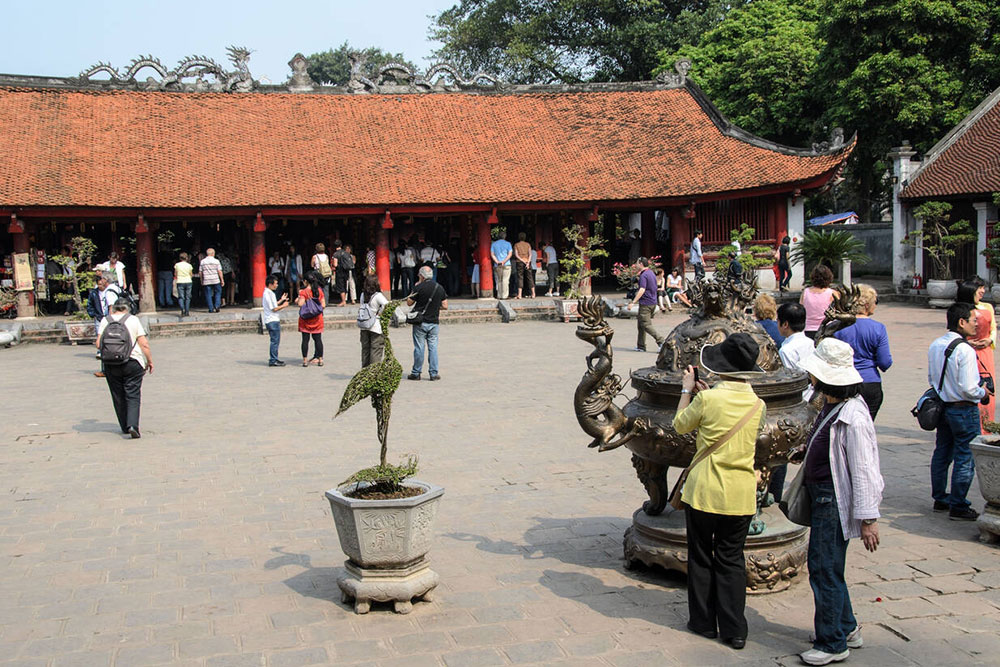
The Temple of Literature is a stunning example of traditional Vietnamese architecture that harmoniously blends Confucian ideals with natural beauty. Its layout, divided into five distinct courtyards, reflects a carefully planned progression from outer worldly concerns to inner scholarly and spiritual enlightenment.
- The First Courtyard welcomes visitors through the imposing Great Gate (Tam Quan), adorned with intricate carvings and calligraphy that embody Confucian principles. This courtyard serves as an introduction, with its wide pathways flanked by lush greenery, creating a tranquil atmosphere.
- The Second Courtyard is equally serene, featuring two rows of towering banyan trees and the Pavilion of Constellation of Literature (Khuê Văn Các). This iconic structure, with its red columns and intricately carved wooden details, symbolizes the pursuit of knowledge and is often featured in Hanoi's cultural imagery.
- The Third Courtyard is centered around the Well of Heavenly Clarity (Thiên Quang Tỉnh), a rectangular pond reflecting the sky above. Flanking the well are two rows of stone stelae mounted on the backs of stone turtles. These stelae commemorate scholars who excelled in the imperial examinations, making this courtyard a tribute to academic achievement.
- The Fourth Courtyard leads to the House of Ceremonies and the Đại Thành Sanctuary, the heart of the temple. Visitors can find altars dedicated to Confucius and his most distinguished disciples here. The sanctuary’s interior is richly decorated with lacquered wood, golden panels, and traditional motifs that exude reverence and grandeur.
- The Fifth Courtyard, added in the 15th century, once housed the Imperial Academy, where Vietnam’s elite scholars were trained. It features classrooms and a statue of Chu Văn An, a revered teacher who symbolizes integrity and dedication to education.
Visitors will find exquisite details throughout the temple, such as traditional tiled roofs, dragon motifs, and carved lotus flowers, each holding symbolic significance. The temple’s architecture emphasizes symmetry, balance, and harmony with nature, reflecting Confucian ideals.
The Temple of Literature’s timeless design highlights Vietnam’s artistic and architectural ingenuity and provides a serene environment for visitors to connect with the country’s rich history and cultural heritage.
Temple of Literature Operating Hours and Entrance Fees
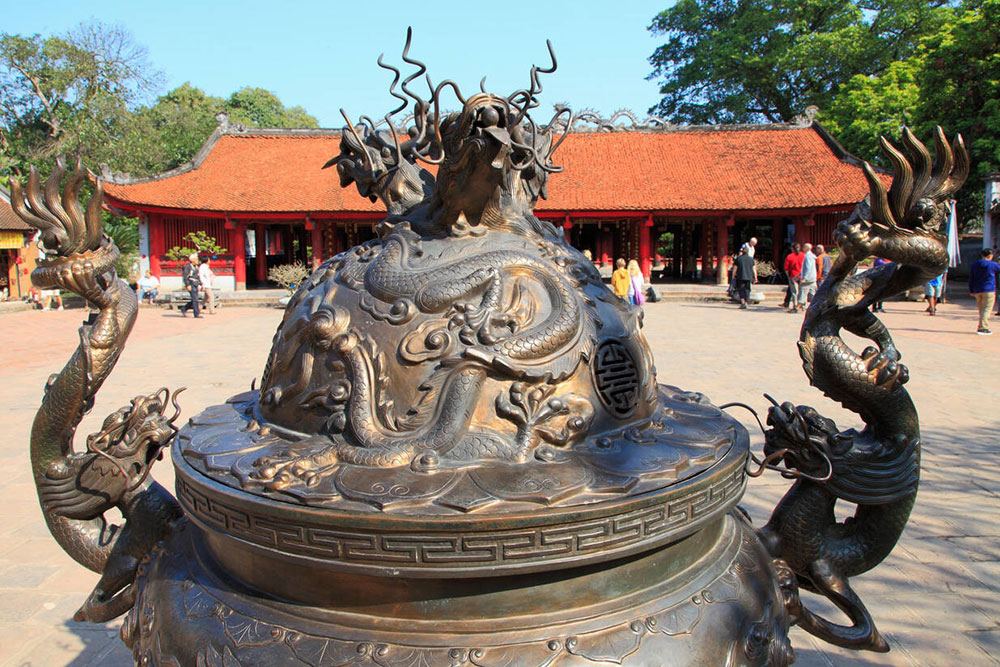
The Temple of Literature welcomes visitors throughout the year, providing ample opportunity to explore its rich history and serene grounds. The temple’s standard operating hours are 8:00 AM to 5:00 PM, with minor variations on public holidays or special occasions. Confirming hours in advance if visiting during Vietnamese holidays is recommended, as closures or adjusted timings may occur.
An entrance fee is required to access the temple, but it remains affordable for both domestic and international visitors. The ticket price is typically around 30,000 VND (approximately USD 1.25), making it an accessible cultural experience for all travelers. Reduced rates are often available for children, students, and groups, so bringing valid identification or proof of enrollment can help secure discounts.
Tickets can be purchased at the entrance, and the process is straightforward. Many visitors also opt to hire a guide or use an audio guide, which may involve additional fees but enhances the experience by providing deeper insights into the temple’s history and significance.
Best Time to Visit the Temple of Literature (Weather Throughout the Year)
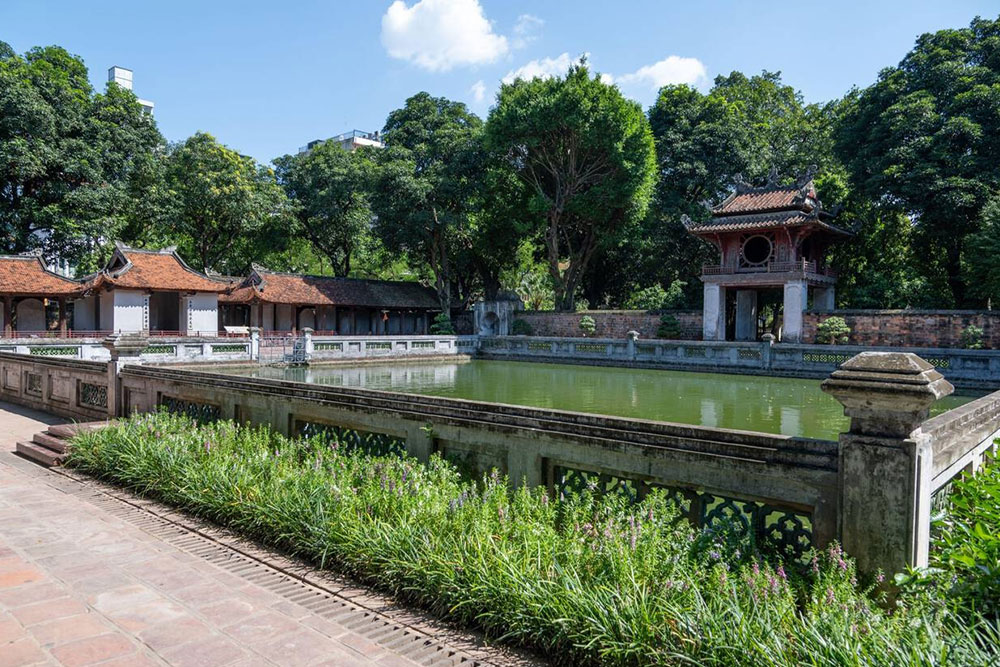
The Temple of Literature is open year-round, but the best time to visit is during Hanoi’s cooler and drier months, typically from October to April. During this period, the weather is pleasant, with comfortable temperatures ranging from 15°C to 25°C (59°F to 77°F). These months are ideal for exploring the temple’s outdoor courtyards and gardens without the discomfort of extreme heat or humidity.
Spring (March to April) is particularly charming as the temple grounds are adorned with blossoming flowers, creating a picturesque and serene atmosphere. This is also a culturally significant time, as festivals celebrating education and Confucian values may take place, offering a more immersive experience.
Autumn (October to November) is another excellent time to visit, with mild weather and clear skies. The golden sunlight enhances the beauty of the traditional architecture and lush greenery, making it perfect for photography.
Summer (May to September) brings higher temperatures and increased humidity, with averages reaching 32°C (90°F). Afternoon rain showers are common, especially in July and August. While the temple remains open, the heat and rain may make it less comfortable for visitors. If traveling during this season, plan a morning visit when it’s cooler, and bring an umbrella or raincoat.
Winter (December to February) can be chilly, with temperatures occasionally dropping to 10°C (50°F). While not as vibrant as spring or autumn, the cooler weather allows for a peaceful visit with fewer crowds.
To fully enjoy your trip, avoid national holidays or peak tourist seasons, such as Tet (Vietnamese Lunar New Year), when the temple can be incredibly crowded. Visiting during off-peak times ensures a quieter and more contemplative experience at this historic landmark. You can also take a look at this guide on the worst time to visit Vietnam and discover how to avoid common travel errors!
What to Bring for Your Trip to the Temple of Literature?
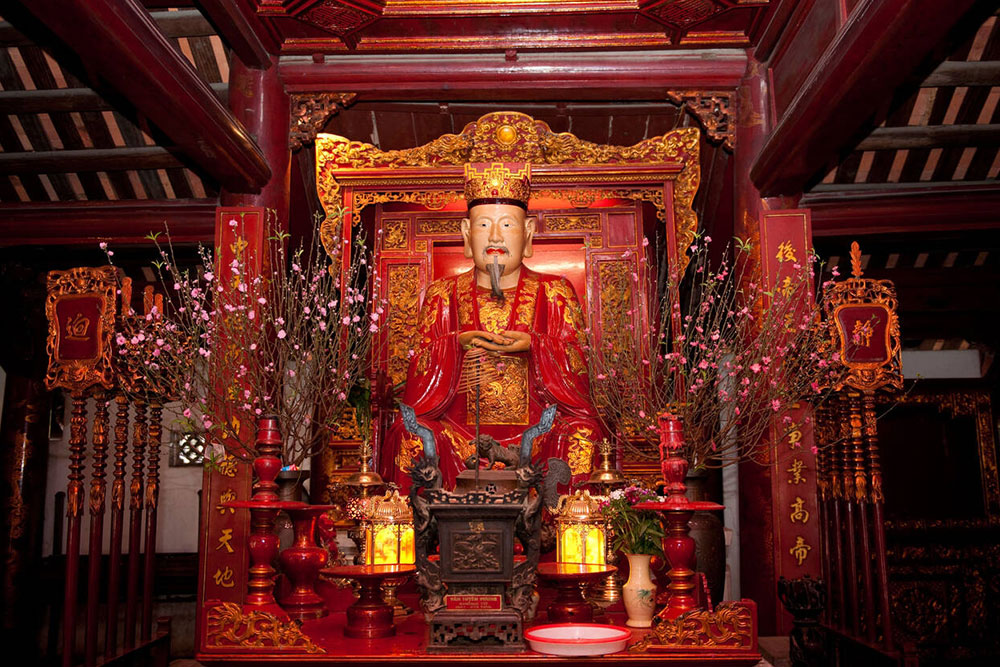
When visiting the Temple of Literature, it’s essential to be well-prepared to ensure a comfortable and respectful experience. Here’s a guide on what to bring for your trip:
- Comfortable Footwear: The temple complex is spacious, with several courtyards and uneven pathways. Comfortable walking shoes are crucial for exploring the site thoroughly. Avoid sandals with thin straps or heels, as they may cause discomfort during your visit.
- Appropriate Clothing: The Temple of Literature is a cultural and historical landmark, so modest attire is recommended. While the dress code is not strictly enforced, visitors are appreciated for wearing clothing that covers their shoulders and knees out of respect for the site’s significance. Lightweight clothing is also advisable, especially if visiting during warmer months.
- Water Bottle: Hanoi can get hot, especially in the summer, so staying hydrated is essential. Bring a reusable water bottle to refill at nearby water stations. Many cafés and shops near the temple also sell bottled water.
- Sunscreen and Hat: If you’re visiting during the warmer months, sunscreen is essential to protect your skin from the sun. A hat or cap is also a good idea to provide extra shade and comfort while walking around the temple grounds.
- Camera: The Temple of Literature is a visually stunning site, with its traditional architecture and tranquil gardens offering plenty of photo opportunities. A camera or smartphone with ample storage space will allow you to capture the beauty of the temple. However, be mindful of photography restrictions in certain areas.
- Umbrella or Raincoat: If you’re visiting during the rainy season (May to September), bringing an umbrella or raincoat is a good idea. Sudden showers are common, and being prepared will allow you to continue exploring without interruption.
Temple of Literature Etiquette and Tips
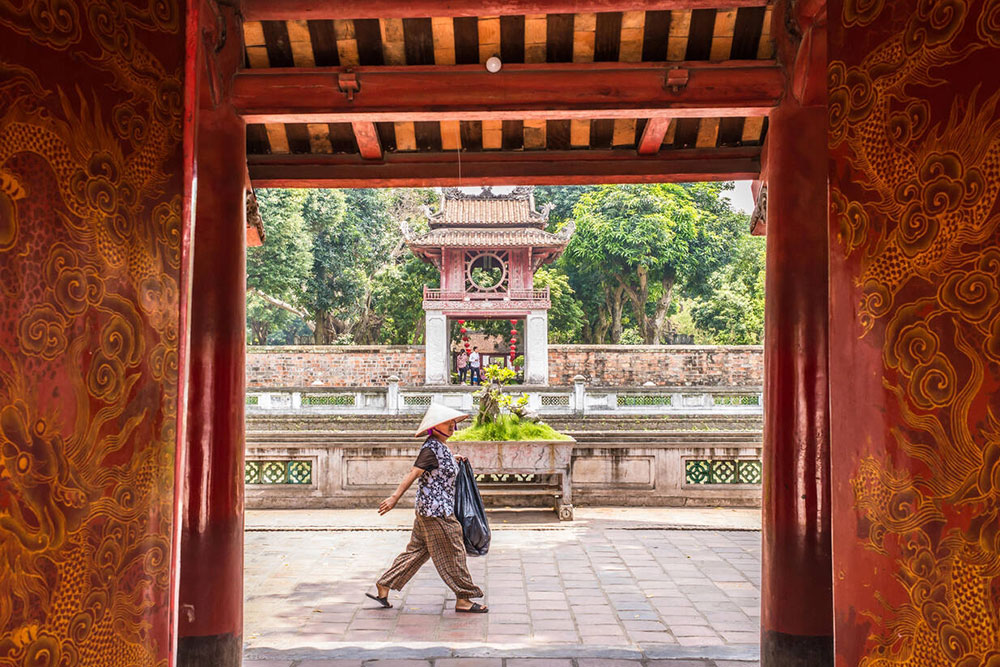
When visiting the Temple of Literature, it’s essential to maintain a respectful and quiet demeanor, as the temple is a historical site and a symbol of Vietnam’s educational and cultural values. Be mindful of the local customs and traditions by speaking softly, avoiding loud conversations, and refraining from disruptive behavior. Respect the sacred nature of the temple by refraining from touching or climbing on the ancient structures and artifacts. Photography is allowed in most areas but always check for any signs indicating restrictions, particularly in places of worship.
Plan your trip around the busiest times, typically during holidays and weekends, to ensure a smooth and enjoyable visit. Early mornings or late afternoons are the best times to visit when the temple is less crowded. Be sure to dress modestly, covering your shoulders and knees as a sign of respect for the cultural and spiritual significance of the site. Follow the designated pathways to protect the delicate architecture and gardens when walking through the temple grounds. Lastly, don’t forget to bring cash for entrance fees, small purchases, and bottled water to stay hydrated, especially if you’re visiting during the hotter months.
Nearby Attractions of the Temple of Literature
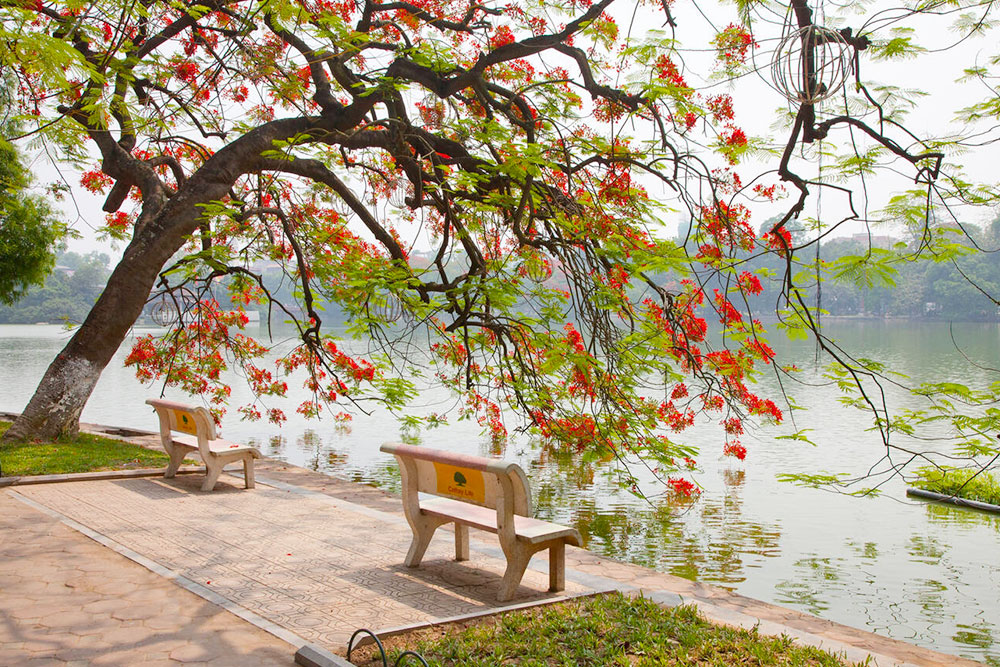
The Temple of Literature is centrally located in Hanoi, making it easy to explore other nearby landmarks that offer a glimpse into the city’s history and culture. Just a short walk away is Hoan Kiem Lake, one of Hanoi’s most iconic attractions. The serene lake, surrounded by lush trees and colonial-era architecture, is a peaceful spot to relax and enjoy the city's natural beauty. At the lake's northern end, you’ll find the Ngoc Son Temple on a small island dedicated to the legendary general Tran Hung Dao.
Another nearby must-see is the Hoa Lo Prison Museum, often called the “Hanoi Hilton”, which offers a poignant look at Vietnam’s history during the French colonial era and the Vietnam War. The museum features exhibits on the prison’s harsh conditions and the stories of the many prisoners who were held there, including American POWs.
The Ho Chi Minh Mausoleum is also accessible to those interested in Vietnamese history and culture. This monumental structure houses the embalmed body of Vietnam’s revolutionary leader, Ho Chi Minh. It is a place of great reverence and offers insight into the country’s modern history.
If you want to explore Hanoi’s rich heritage more deeply, the Vietnam Museum of Ethnology offers fascinating exhibits on diverse ethnic groups. Additionally, the Old Quarter is nearby, where you can wander through narrow streets lined with colonial-era buildings, shops, and street food vendors, offering an authentic taste of the city’s vibrant atmosphere.
Conclusion
The Temple of Literature is one of the must-see destinations for those exploring Hanoi's rich cultural and intellectual heritage. Its stunning architecture, serene courtyards, and historical significance offer an enriching experience for all visitors. You can make the most of your trip by planning, considering the best times to visit, and following the temple’s etiquette. Whether you’re admiring the intricate details of the structures or reflecting on Vietnam’s ancient educational traditions, the Temple of Literature provides a meaningful connection to the past. Take the time to immerse yourself in this peaceful and inspiring landmark that continues to play an essential role in Vietnam's cultural identity.
Finally, you can uncover the charm of Vietnam with our carefully crafted Vietnam tour packages. These packages are designed to immerse you in the city’s rich heritage, lively streets, and famous landmarks. Allow us to handle all the details as you enjoy tailored service and discover the hidden gems of this fantastic destination.

